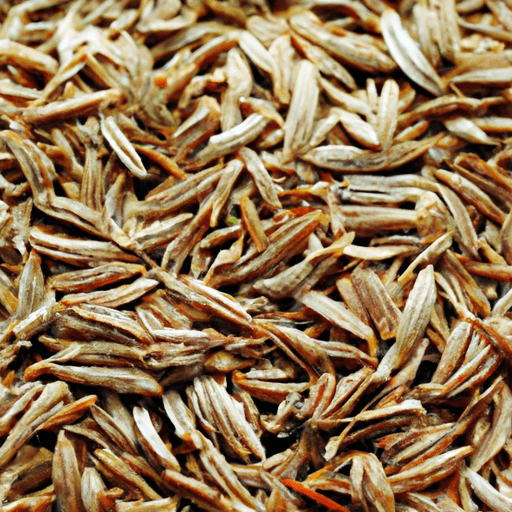Unleashing the Enigmatic Flavor of Comino: A Must-Have Spice in Your Kitchen
Comino, also known as cumin, is a remarkable spice that has been enchanting taste buds for centuries. With its distinctive aroma and flavor, this versatile spice has secured its place in cuisines around the world. Let’s dive into the intriguing world of comino and explore its taste, culinary uses, nutritional value, and a few interesting historical facts.
The Sensational Taste of Comino
Comino offers a warm and earthy flavor with a subtle citrus undertone. Once you experience its pungent aroma, you’ll recognize how it can instantly elevate a dish. The seeds of the comino plant are nutty and peppery, releasing a toasty sensation when lightly toasted before use. Its robust flavor profile makes it an essential ingredient in numerous global cuisines.
Common Uses in Cooking
Comino’s versatility allows it to be seamlessly incorporated into a wide range of dishes. It features prominently in Mexican, Indian, Middle Eastern, and North African cuisines, to name just a few. In Mexican cuisine, comino is a key component of chili powder and adds depth to salsas, guacamole, and enchiladas. It harmonizes exquisitely with beans, rice, and meats, infusing them with a distinctive taste.
In Indian cuisine, comino plays a vital role in curry dishes, masalas, and spiced rice. Its ability to bring out the inherent flavors of other spices is unparalleled. Middle Eastern and North African recipes often rely on comino’s enchanting essence to create dishes like hummus, falafel, couscous, and tagines. The spice’s ability to add warmth and complexity to these dishes is truly remarkable.
Nutritional Value
Beyond its remarkable taste, comino also boasts various health benefits. This spice is packed with antioxidants, vitamins, minerals, and dietary fiber. It is an excellent source of iron, essential for carrying oxygen throughout the body. Comino is known to aid digestion, improve immunity, and even have antimicrobial properties. However, it’s important to note that comino is typically used in small amounts in cooking, so its nutritional impact may be minimal.
Historical Significance and Fascinating Facts
Comino has a rich history dating back to ancient times. Its usage can be traced to ancient Egypt, where it was consumed for its distinct flavor and medicinal properties. Interestingly, comino was buried with pharaohs, showcasing its significance in that era. The spice then spread across the Mediterranean through trade routes, eventually reaching Europe and the Americas.
In medieval culinary practices, comino was used to preserve meat due to its antibacterial properties. Its popularity skyrocketed during the Age of Discovery when explorers brought it to new corners of the globe. Today, it remains an integral part of various traditional dishes, maintaining its relevance throughout centuries.
Time to Embrace Comino!
Now that you’ve unlocked the secrets of comino, it’s time to let this captivating spice take center stage in your culinary adventures. Whether you’re preparing a hearty chili, a fragrant curry, or experimenting with new flavors, comino will infuse your dishes with an irresistible depth. With its fascinating history, unique taste, and remarkable health benefits, comino truly reigns supreme among kitchen spices.
So go ahead, grab a jar of comino, and embark on a culinary journey that enlivens your senses and delights your palate. Your taste buds will thank you!
Comino
- Comino, also known as cumin, is a flowering plant native to the eastern Mediterranean region and South Asia.
- It is one of the oldest known spices and has been used in cooking for thousands of years.
- The ancient Egyptians used comino in the mummification process to help preserve the bodies.
- Comino seeds are small and oval-shaped, with a distinctive warm and earthy aroma.
- It is a key ingredient in many Indian, Middle Eastern, Mexican, and North African cuisines.
- Comino is commonly used in spice blends, such as garam masala, curry powder, and chili powder.
- Its unique flavor adds depth and warmth to dishes, and it pairs well with ingredients like lamb, chicken, rice, vegetables, and legumes.
- In addition to its culinary uses, comino is believed to have various health benefits. It may aid digestion, improve immunity, and have antioxidant properties.
- Comino contains iron, manganese, calcium, and magnesium, which are essential minerals for the body.
- It has been used in traditional medicine to relieve indigestion, promote lactation, and alleviate symptoms of respiratory conditions.
- Comino has been mentioned in ancient texts including the Bible and the writings of Hippocrates.
- The popularity of comino spread during the Middle Ages as trade routes expanded, and it was sought after for its medicinal properties.
- Spain is one of the largest producers and exporters of comino today, with other significant producers including India, Turkey, and Iran.




Use the share button below if you liked it.
It makes me smile, when I see it.